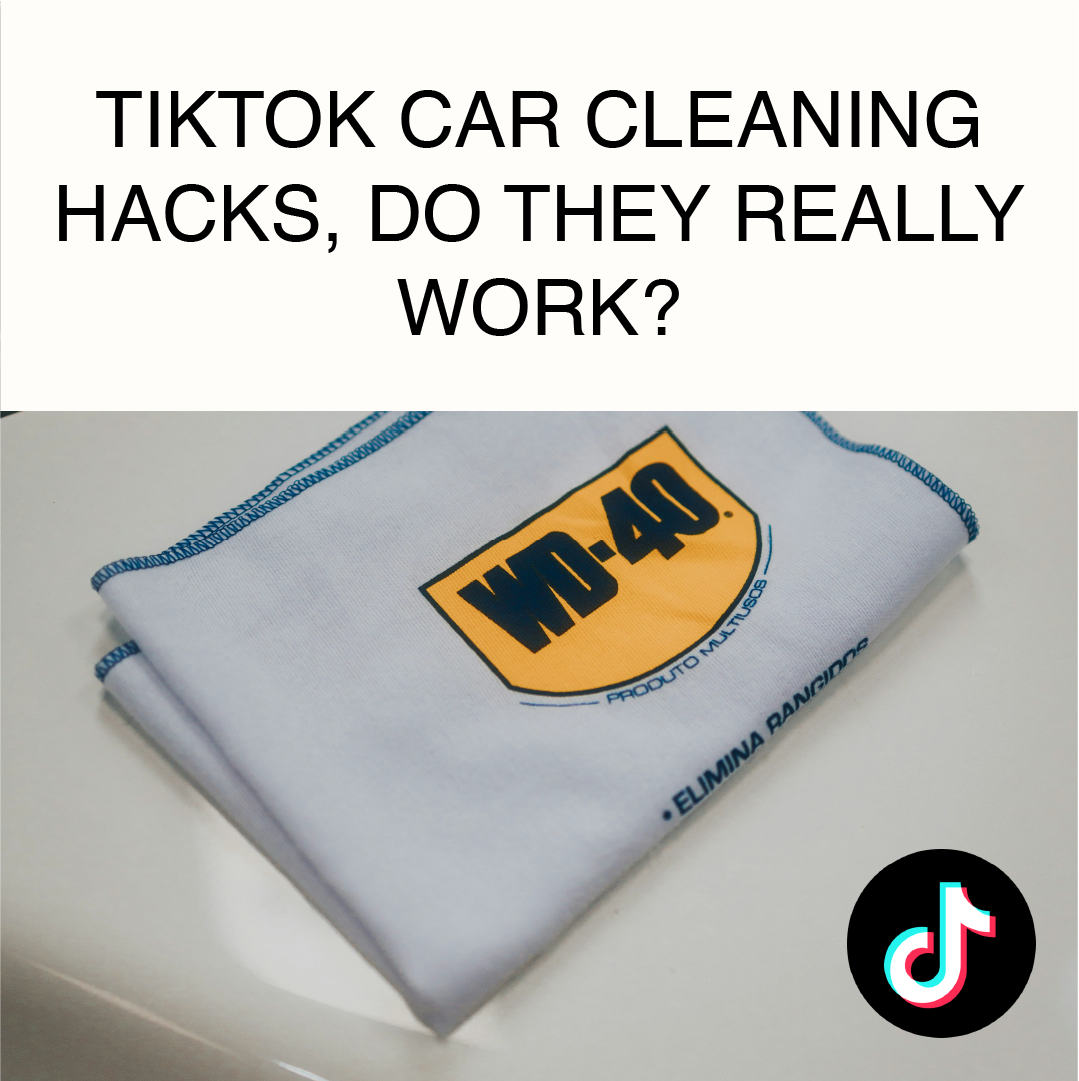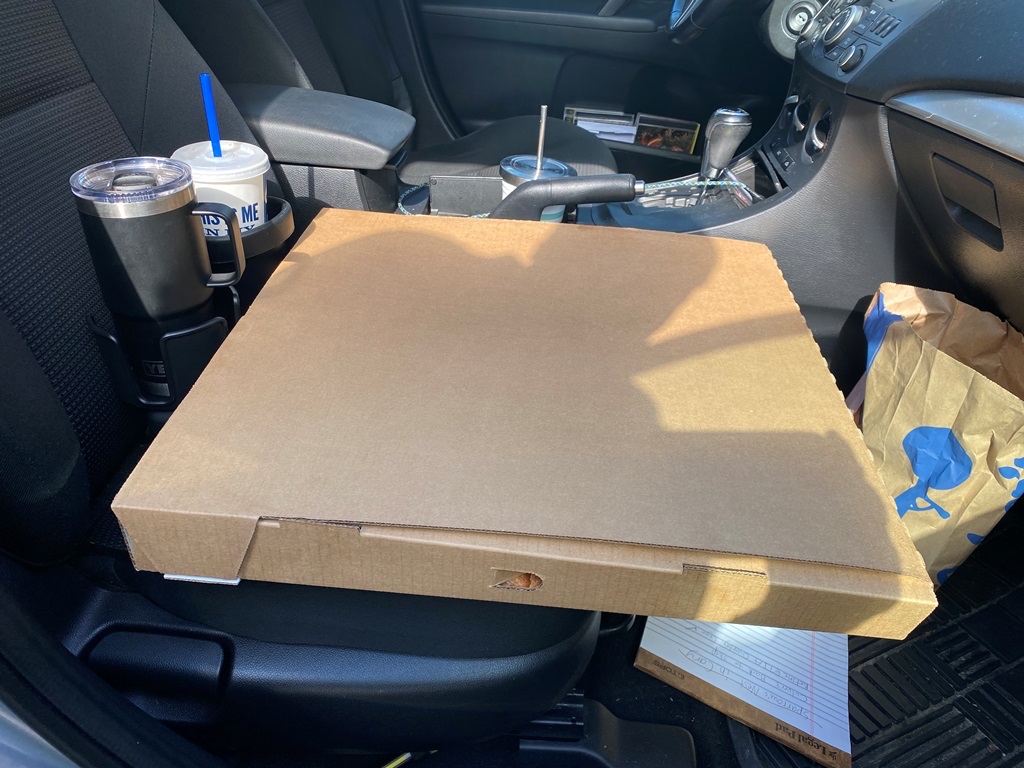Testing viral TikTok hacks so you don’t have to. From toothpaste headlights to olive oil dashboards, here’s what worked, what didn’t, and the hack that cost me $300.
A first-person look at what really happens when you detail an EV after a year — from brake dust and tire grime to screens, vegan leather, and bug-splattered bumpers.

I’m Christian, one of the younger faces at Zs Clean and, as of last summer, the proud owner of a metallic‑blue electric hatchback. I’m 25, grew up in a little neighborhood near the San Diego Zoo, and have been around car washes my entire life. My mom ran a little mobile detailing business when I was a kid, so the smell of car shampoo and the hum of vacuums are as familiar to me as backyard barbecues. When I joined Zs Clean right out of community college, detailing felt less like a job and more like a continuation of a family tradition.
When I bought my first EV last year, I thought I’d be the ideal owner. I’d seen hundreds of Teslas, Leafs and Ioniqs roll through our bays, so I knew regenerative braking meant fewer brake jobs and no oil changes. I pictured a future where my weekends were free because my car would “take care of itself.” Spoiler: it didn’t. After a year of weekend road trips, door‑dash deliveries, dog‑park mud and my own laziness, my little hatchback looked like it had survived a desert rally. This blog is about finally giving it the love it deserved and the quirks I discovered along the way.
We detail customer cars every day, but it took me almost a year to tackle my own. Maybe it’s because when you spend your workday scrubbing and polishing other people’s rides, the last thing you want to do on your time off is drag out the hose and buckets. Or maybe I was secretly curious to see how my EV held up without regular attention. Electric cars are marketed as low‑maintenance wonders, so I let mine be a guinea pig. Over time the evidence piled up: coffee rings on the vegan leather seats, a front bumper plastered with bug guts, and a touchscreen that looked like a crime scene under the sunlight. I kept telling customers about the importance of regular detailing and laughing nervously when they glanced at my dusty wheels.
Finally, on a sunny Saturday in early November, I rolled my EV into the Zs Clean bay and promised myself I’d treat it like any other client’s car. I wanted to see firsthand what was different about cleaning an electric vehicle compared to the gasoline sedans I’d grown up with.
The first surprise? Washing an EV isn’t that different from washing any other car. Manufacturers design the battery and electronics to survive rain and even high‑pressure washes . As long as the bodywork isn’t damaged, you can hose it down like a regular ride. Still, there were a few things I had to keep in mind:
After a two‑bucket wash and a gentle rinse, the paint looked revived. The smooth, grille‑less front end of my hatchback gave me another surprise—bug graveyard.
Traditional gas cars often have a big radiator grille that breaks up the front fascia. EVs don’t need as much airflow, so designers give them smooth, closed noses. It looks futuristic, but it also turns the bumper into a windshield for bugs. Every road trip I’d taken in the past year left behind a Jackson Pollock of splattered insects. According to a Turtle Wax Pro guide, bug splats are more than just gross—they’re a mixture of squashed insects and their guts that can wear on your vehicle’s clear coat if left untreated . The remains dry and bake onto the paint, becoming harder to remove . They can even eat through the clear coat and cause permanent damage .
Removing them required patience. I pre‑soaked the bumper with a dedicated bug remover, let it dwell for five minutes, and used a bug sponge to gently lift off the residue. Soap and water can work in a pinch , but a purpose‑made product saves time . After scrubbing, I reapplied a sealant on the bumper to make future splats easier to wash away. Now I joke that my EV’s nose is the state’s smallest bug sanctuary.
Driving an EV feels almost magical—you lift off the accelerator and the car slows down as if by thought. Regenerative braking recovers energy and reduces friction brake use. That’s why BEVs cut brake dust emissions by about 83 percent . Less dust means cleaner wheels and less particulate pollution, but it also means the physical brakes sit idle most of the time. NAPA’s brake maintenance guide explains that physical brake components still need periodic cleaning and lubrication . Road debris and salt can settle on the rotors and calipers, and leaving them unused can cause rust or glazing .
While detailing, I pulled off the wheels and inspected the rotors. There was a faint ring of surface rust on the edges. I remembered that some Teslas have a brake‑burnishing mode that temporarily disables regenerative braking so the pads can scrub the rotors . In my case, a few firm stops using the friction brakes cleaned them up. I also cleaned the caliper slides and applied brake grease per NAPA’s recommendations . It felt odd to “exercise” the brakes on a car that rarely uses them, but it’s an important habit for EV owners.
Modern EVs replace most buttons with a giant central touchscreen. I love the minimalist design, but the screen is a magnet for fingerprints and grime. Dr. Beasley’s detailing lab notes that car touch screens are some of the highest‑traffic areas in a vehicle. They accumulate a film of dried sweat, oil and dead skin which not only looks terrible but can make the touch function less responsive . A dirty touchscreen can even be dangerous because fumbling with an unresponsive display while driving is distracting .
Cleaning EV screens isn’t like wiping your phone. Dr. Beasley recommends gentle glass cleaners and soft microfiber towels . You should avoid high alcohol, bleach or ammonia concentrations that can damage the screen , and never spray the cleaner directly onto the display . Automotive touchscreens are typically made of thin plastic layers; pressing too hard can dent the screen or introduce moisture that damages sensors . Following that advice, I powered down the screen, let it cool off, and misted cleaner onto a microfiber towel. A few gentle passes later, my map view looked crystal clear again. Some EVs, including Tesla, have a Screen Clean mode that disables touch inputs while you wipe —a handy feature I now use regularly.
To prevent future smudges, I applied a protective coating designed for infotainment screens. Dr. Beasley points out that many screen protectors actually attract more fingerprints and can distort the display . A hydrophobic coating helps repel oils and water and makes wiping off smudges easier .
One of the selling points of my EV was its vegan leather interior. Tesla’s manual says the seats are made of a sustainable material that is softer than leather yet more durable and stain resistant . Sounds perfect, right? For the most part, it is. Routine maintenance involves wiping spills with a soft cloth dampened in warm water and mild soap, then drying with a lint‑free cloth . You should avoid harsh chemicals, including products with alcohol, bleach or citrus .
During my year of ownership I discovered two realities:
The vegan leather is also more sensitive to cosmetics and sunscreen. Tesla cautions against contact with certain cosmetics and oils because they can stain or discolor the seats . In my day job I’ve seen everything from lip balm smudges to melted crayons, so I now keep a towel over my seat after surf sessions. When in doubt, stick to warm water and mild soap, and stay away from conditioners or protectants that may leave residue .
Detailing the rest of the cabin reminded me that EVs may have fewer mechanical parts, but they have more electronics. NexDrive points out that EV interiors usually feature multiple displays and sensors, so you should use gentle cleaners made for these surfaces . I vacuumed the floor and seat crevices, wiped down the dashboard with a damp microfiber cloth, and treated the steering wheel with a leather balm as recommended . I avoided any oily dressings that could interfere with sensors or make surfaces slippery. Finally, I sprayed an odor eliminator under the seats to get rid of that faint gym‑bag smell .
One thing I didn’t have to do? Change the oil. EVs don’t need engine oil or transmission fluid changes, so there’s no grime buildup in the engine bay. It’s still important to check coolant for the battery thermal management system and keep the windshield washer fluid topped up, but overall there are fewer fluids to spill.
After a full day of washing, scrubbing, wiping and polishing, my EV looked better than the day I bought it. The process taught me that EV detailing is similar to traditional detailing but with some unique twists:
Detailing my own EV wasn’t just a Saturday chore; it was a mini‑case study in how car care is evolving. More customers at Zs Clean pull up in electric vehicles every week. They have questions I had never thought about a few years ago: Will a car wash flood my battery? Do I need to wax a plastic bumper? How do I keep my touchscreen clean? With EV adoption accelerating, long‑term appearance care is becoming a real concern.
From what I’ve learned, EV owners can relax—their cars are built to handle rain and soap , and many maintenance tasks are actually easier. There are fewer fluids to leak, fewer moving parts to wear out, and the cabin tends to stay cleaner because there’s no exhaust smell. At the same time, new materials and technologies mean new routines. Tires wear differently, touchscreens need gentle care, vegan leather has its quirks, and bugs seem to have a personal vendetta against grille‑less bumpers.
For me, the biggest takeaway wasn’t that EVs are harder or easier to detail—it’s that they’re different. Understanding those differences is what keeps our work interesting. As the guy at Zs Clean who just detailed his own electric car for the first time, I can now look customers in the eye and say, “I get it.” And when my mom asks why there are bug guts in my backyard compost pile, I tell her it’s all part of the job.
Get car care tips and updates you’ll actually use.
Yes. Modern EVs are built to handle rain, hoses, and even high-pressure car washes as long as the body panels and seals aren’t damaged. The main difference is being careful around sensitive areas like the charging port and sensors — wipe those with a damp cloth instead of spraying directly.
Regenerative braking reduces brake dust by up to 83%, so wheels stay cleaner — but EVs are much heavier due to their batteries. That extra weight, plus instant torque, creates more tire wear and tire grime, which is why EV wheels often look dirtier even with almost no brake dust.
EVs replace buttons with large touchscreens and use vegan leather that needs gentle care. Touchscreens collect fingerprints quickly and require soft microfiber towels and mild cleaners. Vegan leather handles daily spills well, but dyes, cosmetics, and certain chemicals can stain it, so mild soap and water are usually best.

Testing viral TikTok hacks so you don’t have to. From toothpaste headlights to olive oil dashboards, here’s what worked, what didn’t, and the hack that cost me $300.

After 15+ years and what feels like 100,000 interiors, these are the weird finds that stuck with me.